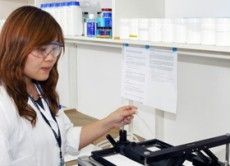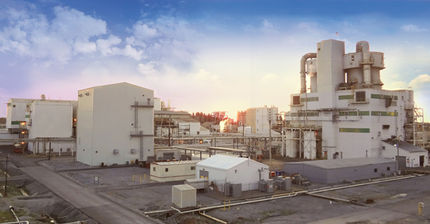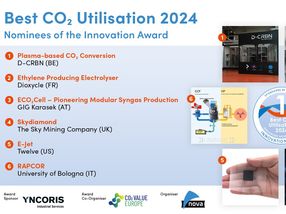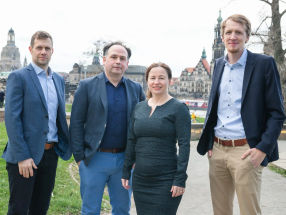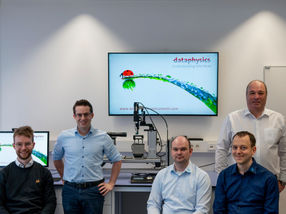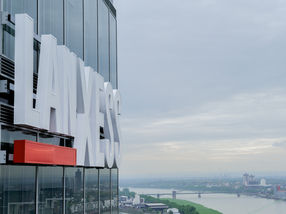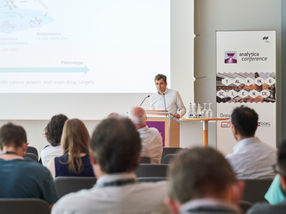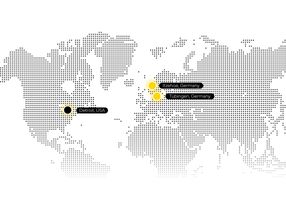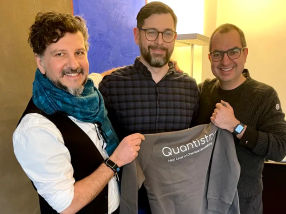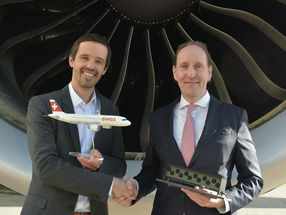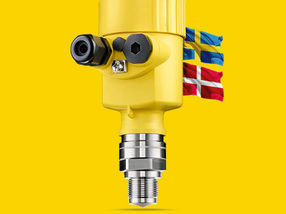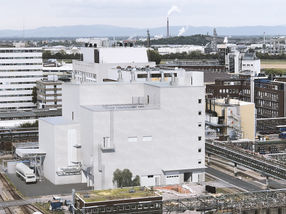Wacker: All business divisions generate higher sales
After a Good Third Quarter 2014, WACKER Expects to Post Full-Year EBITDA of Around One Billion Euros
Thanks to higher volumes in many product areas and higher prices for some products – especially solar silicon – Wacker Chemie AG achieved a year-on-year increase in sales in the period July through September 2014. The Munich-based chemical company generated third-quarter sales of €1,232.2 million (Q3 2013: €1,165.4 million), almost 6 percent more than a year earlier. All five business divisions contributed to this growth, and the Group as a whole almost matched its sales figure for the strong preceding quarter (€1,242.3 million).
WACKER’s earnings before interest, taxes, depreciation and amortization (EBITDA) in Q3 2014 more than doubled relative to the year-earlier period, rising to €347.5 million (Q3 2013: €167.9 million). Compared to the preceding quarter (€229.5 million), the increase was over 51 percent. The EBITDA margin rose accordingly to 28.2 percent from 14.4 percent in Q3 2013 and 18.5 percent in Q2 2014. The Group’s third-quarter earnings before interest and taxes (EBIT) were almost six times higher year on year, coming in at €196.3 million (Q3 2013: €35.1 million). The corresponding EBIT margin was 15.9 percent (Q3 2013: 3.0 percent). Net income for the quarter under review was €119.0 million (Q3 2013: €5.4 million) and earnings per share amounted to €2.43 (Q3 2013: €0.09).
In addition to substantially higher solar-silicon prices, another factor in this strong increase was special income recognized at WACKER POLYSILICON. The Group terminated or restructured contractual relationships with solar-industry customers during the reporting quarter. In this context, WACKER retained advance payments and received damages totaling €92.3 million (Q3 2013: €13.2 million). Adjusted for this special income, EBITDA rose by close to 65 percent year on year.
In its full-year 2014 outlook, WACKER presented a more specific earnings forecast. It now expects to post EBITDA of around €1 billion (2013: €678.7 million), while the full-year EBITDA margin is expected be over 20 percent (2013: 15.2 percent). WACKER had previously assumed that it would exceed its prior-year EBITDA figure by at least one-third. The company is still expecting to post a mid-single-digit percentage increase in Group sales (2013: €4.48 billion).
“After the first nine months of the year, we are well on track to achieve our targets for 2014,” said Group CEO Rudolf Staudigl in Munich on Thursday. “Demand has remained robust in numerous sectors and regions, and there have also been positive price signals for key WACKER products, particularly for our polysilicon business. Additionally, the measures introduced to improve our cost structures are having a tangible effect, helping us enhance our competitiveness and our profitability.”
Regions
Asia was once again clearly the most significant market for WACKER in Q3 2014, with the Group generating 41 percent of its total sales there (Q3 2013: 40 percent). Sales in the region grew by almost 7 percent year on year to €501.1 million (Q3 2013: €470.3 million). Compared with the preceding quarter (€525.2 million), Group sales in Asia fell by almost 5 percent. Among the reasons for this decrease was the reduction in polysilicon volumes caused by the insolvency of a solar-sector customer. Higher sales in the chemical business did not fully offset this effect.
In Europe, WACKER achieved sales of €293.4 million from July through September 2014 (Q3 2013: €279.6 million). That was about 5 percent more than a year earlier, but over 2 percent less than in Q2 2014 (€300.8 million). Sales of polymer products, in particular, were down in Europe from the preceding quarter due to slower economy.
In Germany, the WACKER Group achieved sales of €174.8 million in the reporting quarter (Q3 2013: €170.2 million), almost 3 percent more than a year ago and over 8 percent more than in Q2 2014 (€161.6 million). The rise was caused by higher sales of polysilicon and of silicone and polymer products.
In the Americas, too, WACKER increased its sales both year on year and quarter on quarter. The Group generated third-quarter sales of €215.9 million in this region (Q3 2013: €202.1 million), up almost 7 percent against the prior-year period and a good 4 percent more than in the preceding quarter (€207.2 million). All five business divisions improved on their respective prior-year sales in the Americas. Sales of semiconductor wafers grew particularly strongly compared with Q2 2014.
Group sales in the countries combined under “Other Regions” totaled €47.0 million in Q3 2014, after €43.2 million in Q3 2013 and €47.5 million in Q2 2014. Overall, the WACKER Group generated about 86 percent of its sales with customers outside Germany in the quarter under review (Q3 2013: 85 percent).
Investments and Net Cash Flow
The WACKER Group invested €152.9 million in the third quarter of 2014 (Q3 2013: €98.2 million). This represents a project-related increase of almost 56 percent on the prior-year period and over 51 percent on the preceding quarter (€101.0 million). The Group’s net cash flow in the third quarter of 2014 was €178.4 million, compared with €164.7 million a year ago, a year-on-year increase of around 8 percent.
Investing activities during the reporting quarter remained centered on the construction of the new polysilicon production site in Charleston (Tennessee, USA). Almost two-thirds of the Group’s investment spending was allocated to this project in the July-through-September period. The facilities there are expected to be completed by the middle of next year, with the start-up in the second half of 2015.
At the Burghausen site in Germany, the expansion of production capacity for dispersible polymer powders is proceeding according to plan. WACKER is constructing a new spray dryer there with an annual capacity of 50,000 metric tons. The facility is scheduled to come on stream in the first quarter of 2015 and will be one of the largest of its kind worldwide. A total of around €20 million has been budgeted for the project.
Production capacity for dispersible polymer powders is also being extended at the Nanjing site in China, with a number of individual measures being taken there to eliminate production bottlenecks and thus enhance productivity. Once these measures are completed, WACKER expects to be able to produce up to 60,000 metric tons of dispersible polymer powder at the site annually, depending on the product mix.
Employees
The number of WACKER employees worldwide largely held constant in the third quarter of 2014. On September 30, 2014, the Group had 16,724 employees (June 30, 2014: 16,758). As of the same date, WACKER had 12,399 employees in Germany (June 30, 2014: 12,449) and 4,325 at its international sites (June 30, 2014: 4,309).
Business Divisions
In Q3 2014, WACKER SILICONES increased its total sales again, both year on year and quarter on quarter. The division generated sales of €447.5 million in the reporting quarter (Q3 2013: €429.4 million), up by a good 4 percent relative to Q3 2013 and over 1 percent more than in Q2 2014 (€441.2 million). Higher volumes and, in some product segments, higher prices were the main reasons for this increase. Earnings showed significantly stronger growth than sales. WACKER SILICONES generated third-quarter EBITDA of €69.5 million (Q3 2013: €59.2 million), a rise of over 17 percent. Compared with the preceding quarter (€57.4 million), EBITDA grew by about 21 percent. There was a corresponding improvement in the EBITDA margin, which rose to 15.5 percent in the reporting quarter, after 13.8 percent a year ago and 13.0 percent in Q2 2014. Good fixed-cost coverage – resulting from very high production-capacity utilization – strengthened the division’s profitability. Better prices in some product segments also had a positive effect on earnings.
WACKER POLYMERS grew its total Q3 2014 sales compared with both the same quarter last year and Q2 2014. The division’s July-through-September sales came in at €288.0 million (Q3 2013: €265.4 million), a rise of almost 9 percent. Higher volumes were the main reason for this increase. Relative to the preceding quarter (€285.5 million), sales were up nearly 1 percent. Higher prices for dispersions and dispersible polymer powders had a positive effect on the sales trend. WACKER POLYMERS’ EBITDA rose both year on year and quarter on quarter, amounting to €48.2 million in July through September 2014 (Q3 2013: €45.1 million). That was almost 7 percent more than the prior-year period and almost 11 percent more than in the preceding quarter (€43.5 million). The EBITDA margin for Q3 2014 came in at 16.7 percent after 17.0 percent in Q3 2013 and 15.2 percent in Q2 2014. Third-quarter results benefited from WACKER POLYMERS’ success in achieving price increases.
WACKER BIOSOLUTIONS achieved total sales of €45.2 million (Q3 2013: €38.1 million) from July through September 2014. This rise of almost 19 percent was chiefly fueled by volume growth and higher prices in several product segments. The acquisition of Scil Proteins Production GmbH was another positive factor in the division’s higher year-on-year sales. Relative to Q2 2014 (€46.6 million), sales declined by 3 percent. One reason for this was plant maintenance work, which lowered both production and sales volumes in some product segments. WACKER BIOSOLUTIONS’ EBITDA was €5.4 million in the reporting quarter (Q3 2013: €5.3 million). This corresponds to an EBITDA margin of 11.9 percent (Q3 2013: 13.9 percent).
WACKER POLYSILICON generated total third-quarter sales of €252.4 million (Q3 2013: €235.7 million), 7 percent more year on year, but almost 8 percent less than Q2 2014 (€273.2 million). The decline against the second quarter was due to lower volumes of solar silicon. In the reporting quarter, WACKER POLYSILICON carried out scheduled maintenance work on a number of facilities. As a result, full production capacity was not always available. In addition, deliveries of goods en route to a customer that became insolvent during the third quarter were canceled and returned. WACKER POLYSILICON’s EBITDA soared in Q3 2014, almost quadrupling compared with the prior-year period and more than double the Q2 2014 figure. The division’s third-quarter EBITDA came in at €180.3 million (Q3 2013: €46.6 million). In Q2 2014, WACKER POLYSILICON had generated EBITDA of €87.9 million. The EBITDA margin rose accordingly, climbing from 19.8 percent in Q3 2013 and 32.2 percent in Q2 2014 to 71.4 percent in the reporting quarter. Special income was a major reason for this substantial increase in earnings. In the quarter under review, the division terminated or restructured contractual relationships with solar-industry customers. In this context, WACKER POLYSILICON retained advance payments and received damages totaling €92.3 million (Q3 2013: €13.2 million). At the same time, polysilicon prices rose substantially compared with last year. Adjusted for non-recurring effects, EBITDA at WACKER POLYSILICON more than doubled year on year and was stable relative to the preceding quar¬ter. The adjusted third-quarter EBITDA margin amounted to 34.9 percent.
Siltronic was again able to increase its sales in Q3 2014 thanks to higher volumes. From July through September, sales totaled €216.0 million (Q3 2013: €197.1 million). That was almost 10 percent above the prior-year period and close to 3 percent more than in the preceding quarter (€210.4 million). The main reason for this increase was the consolidation of Siltronic Silicon Wafer Pte. Ltd. Lower prices, though, dampened sales growth compared with the same quarter last year. Relative to Q2 2014, prices were more or less stable overall. At €33.2 million (Q3 2013: €5.2 million), Siltronic’s EBITDA was several times higher than the prior-year figure. Relative to the preceding quarter (€28.1 million), EBITDA rose by more than 18 percent. While the main reason for this increase was the consolidation of Siltronic Silicon Wafer Pte. Ltd., earnings also benefited from the fact that plant utilization was higher than in the prior year, which meant fixed-cost coverage was better. The EBITDA margin increased to 15.4 percent in the reporting quarter (Q3 2013: 2.6 percent). The corresponding Q2 2014 figure was 13.4 percent.
Outlook
The geopolitical crises in Eastern Europe and the Middle East are increasing the uncertainty surrounding economic growth. In recent weeks, many economic experts have revised their forecasts downward, but still expect economic output to expand this year and gain further momentum in 2015.
Sales at WACKER SILICONES are expected to edge up in 2014. Growth will be generated mainly in Asia, where rising affluence is prompting higher per-capita consumption of silicone products. Additionally, ever increasing quality demands are accelerating the process of substituting simple products with high-end versions that incorporate silicones. EBITDA is likely to be slightly lower than last year. One reason for this is the fact that the prior-year figure included a positive non-recurring effect of €13.7 million, stemming from the utilization of provisions for purchase contract obligations in China.
Sales at WACKER POLYMERS are expected to climb compared with the previous year, with the percentage increase likely to be slightly above the average for the Group. Adhesive and coating applications are among the main growth drivers of dispersions business. In emerging-market economies, the division expects further growth with its polymer products for the construction industry. EBITDA is likely to be slightly lower than last year, mainly because of the much higher cost of vinyl acetate monomer (a base material).
WACKER BIOSOLUTIONS expects full-year 2014 sales to grow at a percentage rate above the Group average. The increase will be mainly due to volume growth and higher prices in several product segments. Another factor bolstering sales is the acquisition of Scil Proteins Production GmbH, which is enabling the division to expand its biologics business. WACKER BIOSOLUTIONS’ EBITDA is projected to come in at roughly the prior-year level.
In WACKER’s polysilicon business, both volumes and sales are likely to rise in 2014. From today’s perspective, sales will grow at a percentage rate above the Group average. WACKER assumes that the photovoltaic market will continue on its growth trajectory through year-end and beyond. With demand rising, WACKER POLYSILICON expects the price environment for solar silicon to remain positive in the months ahead. The division’s full-year 2014 EBITDA forecast is for substantial growth compared with the previous year. EBITDA will be supported by special income from retained advance payments and damages received. The operating EBITDA margin should also improve relative to last year.
Siltronic expects its sales in 2014 to grow at a percentage rate higher than the Group average. This growth will be due primarily to the first-time consolidation of Siltronic Silicon Wafer Pte. Ltd. (SSW), which is now 78 percent owned by Siltronic. Prices are expected to remain at their third-quarter levels for the rest of the year. Siltronic’s EBITDA is likely to be substantially higher than last year due to the consolidation of SSW in the WACKER Group.
Overall, WACKER continues to expect its full-year 2014 sales to rise by a mid-single-digit percentage. The Group expects to post a substantial increase in EBITDA to about €1 billion and an EBITDA margin of more than 20 percent. In addition to the improved operations trend, a key factor lifting earnings is special-income items at WACKER POLYSILICON. Higher volumes, further cost savings and the first-time consolidation of Siltronic Silicon Wafer Pte. Ltd. will also have a positive impact on EBITDA. Investments will edge up year on year, reaching about €550 million. At around €600 million, depreciation will be slightly above that figure and somewhat higher than in the previous year. WACKER’s objective is to achieve a markedly positive net cash flow that, from the present standpoint, is expected to be around the prior-year level. Net financial debt will climb by about €300 million. Group net income is expected to be much higher than last year.
